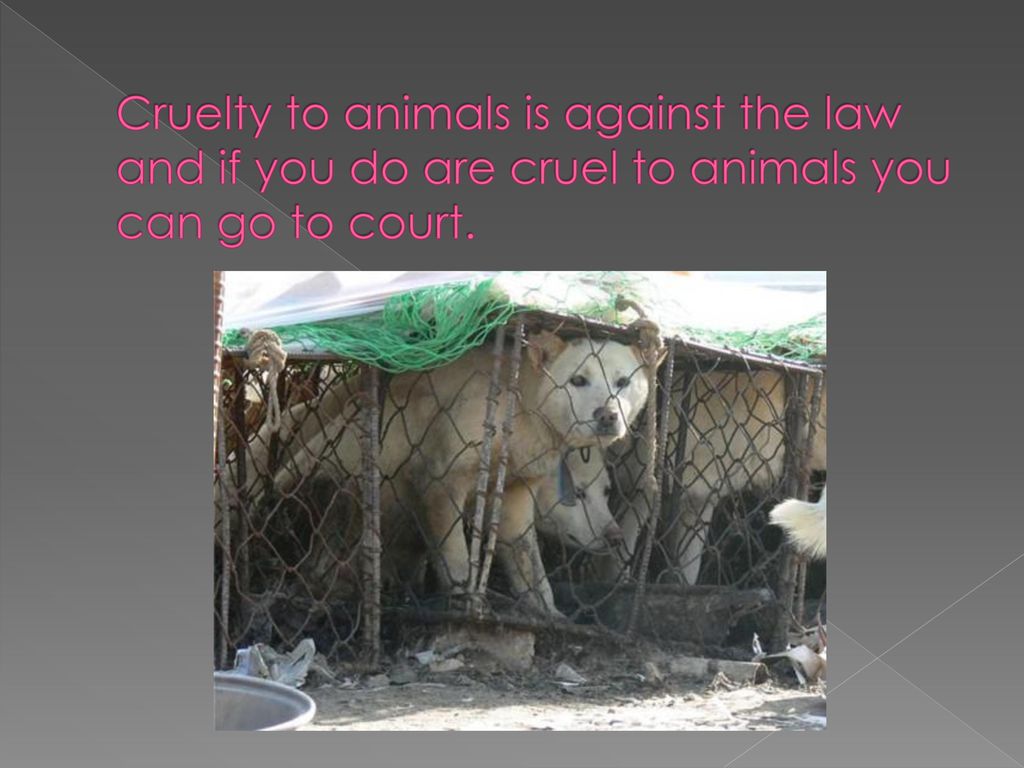Animal cruelty, in the broadest sense, refers to the infliction of suffering or harm upon animals. This heinous act can manifest in various forms, including neglect, physical abuse, and even exploitation for entertainment purposes. The legality of such actions and whether they fall under the umbrella of crimes of moral turpitude is a subject of profound importance. Understanding the ramifications of animal cruelty not only sheds light on societal values but also raises intricate questions regarding ethics and the law.
To ascertain whether animal cruelty constitutes a crime of moral turpitude, one must first define the phrase. Crimes of moral turpitude typically encompass actions that gravely violate the sentiment of the community, demonstrating an inherent disregard for societal norms. These offenses often result in consequences that extend beyond mere legal penalties, frequently affecting an individual’s reputation, career prospects, and social standing. They evoke condemnation from society, as they signal a profound lack of ethics or moral fiber.
In examining animal cruelty through this multifaceted lens, several layers of complexity emerge. First, consider the prevailing legal standards in various jurisdictions. In many places, animal cruelty is classified under specific statutes that delineate various forms of misconduct against animals, which are categorized based on degrees of severity. These laws address both intentional acts of cruelty and instances of neglect. The classification can range from misdemeanors—punishable by fines or short periods of incarceration—to felonies, which carry more severe penalties including extended imprisonment.
For instance, numerous states have enacted laws delineating animal cruelty as a felony if it involves severe physical harm or death to an animal. Such legislation signifies a societal recognition of the ethical obligation to protect animals and reflects a growing awareness of their welfare. As people continue to broaden their understanding of animal sentience, laws must evolve accordingly to safeguard these vulnerable beings. Yet, the legal inquiry into whether such laws reflect a substantive moral turpitude remains contentious.
The duality of human-animal relationships undoubtedly complicates the discourse. Societal attitudes towards animals vary widely, influenced by cultural norms, economic factors, and personal beliefs. In some cultures, animals are revered and protected, while in others, they may be viewed merely as property or sources of food. This divergence raises a critical question: can a legal system that defines animal cruelty as a crime of moral turpitude bridge the gap between differing societal values? The answer often hinges on the perception that cruelty against animals undermines the ethical foundation of a community.
Furthermore, the psychological factors behind animal cruelty deserve scrutiny. Research has consistently illustrated a disturbing correlation between animal abuse and other forms of violence, including domestic abuse and criminal behavior. Individuals who engage in acts of cruelty towards animals often display a pattern of antisocial behavior. This connection suggests that such actions may not only represent a violation of legal norms but also signify a deeper moral failing—an inability to empathize with living beings. Accordingly, some legal systems may contend that animal cruelty represents moral turpitude precisely because it highlights a profound absence of empathy and moral consideration.
Moving beyond individual acts to systemic issues, the commodification of animals in industries like agriculture and entertainment further complicates the dialogue on cruelty and moral turpitude. The exploitation of animals for profit often leads to practices that could be classified as cruel. While laws exist to regulate such exploitation, they frequently fall short of ensuring ethical treatment. This systemic cruelty contradicts the moral obligations society ostensibly holds towards sentient beings. Herein lies the crux of the problem: does systemic cruelty absolve individuals within these industries from the moral turpitude associated with their actions, or does it amplify their culpability?
Legal ramifications for animal cruelty can extend beyond outright acts of violence or neglect. In fact, offenders may find themselves subject to scrutiny in various ways. For instance, someone convicted of animal cruelty might experience repercussions in their employment opportunities, as many professions—especially those working with children, the elderly, or other vulnerable populations—often require background checks that consider moral character. The act of inflicting pain upon animals could foster distrust and raise ethical concerns regarding their capability to care for dependents or engage in positions of responsibility.
Moreover, societal reactions to instances of animal cruelty often underscore a collective consciousness about moral standards. The public tends to rally against heinous acts of cruelty, supporting stricter laws, campaigning for animal rights, and advocating for better enforcement. Initiatives such as these underscore a shifting paradigm wherein society increasingly recognizes the intrinsic value of animal life. This transformation creates both an ethical obligation and a legal impetus for laws and policies to reflect such values comprehensively.
In summary, animal cruelty persists as a pervasive issue intertwined with ethical, legal, and societal quandaries. The classification of animal cruelty as a crime of moral turpitude highlights the multifaceted nature of this discourse, where legal standards intersect with deeply ingrained moral beliefs. While laws prohibiting animal cruelty provide a necessary framework for protecting vulnerable beings, they also provoke critical questions regarding the ethical responsibilities of individuals and society at large. As public consciousness evolves, so too must the legal systems designed to prevent and penalize acts of cruelty against animals, ensuring that they align with contemporary values regarding moral and ethical conduct.







